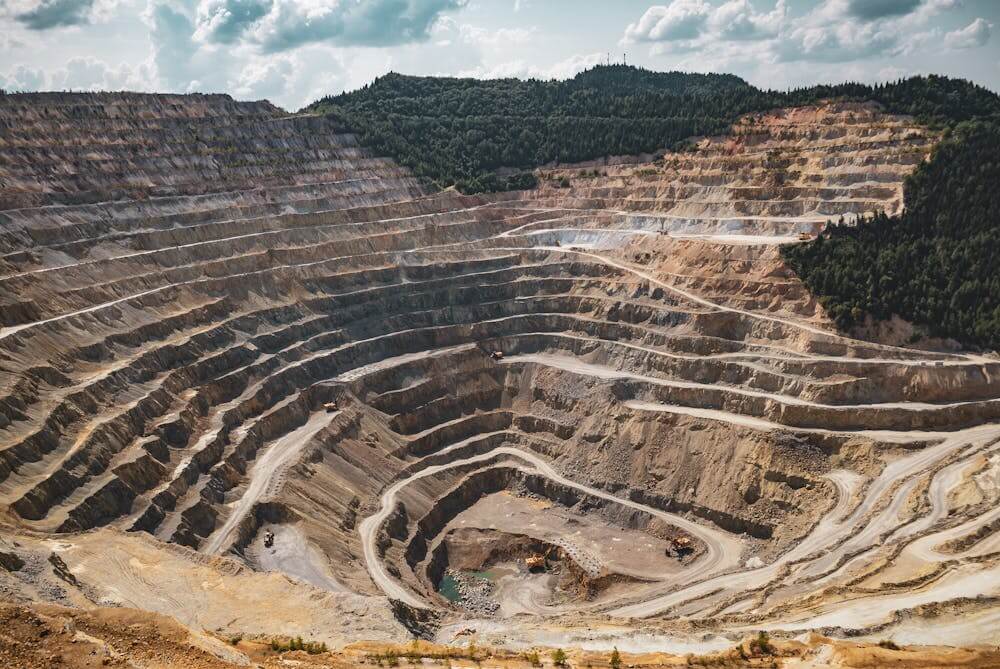Mining has long been a cornerstone of economic development, providing essential raw materials for various industries, creating jobs, and generating significant revenue for many countries. However, the environmental impact of mining cannot be overlooked.
The challenge lies in finding a balance between economic growth and environmental responsibility. Sustainable mining practices offer a viable solution to this challenge.
The Importance of Sustainable Mining Practices
Economic Benefits of Mining
Mining contributes significantly to national and local economies. It provides raw materials essential for construction, manufacturing, and technology industries. The sector creates jobs, both directly and indirectly, fostering economic growth and development in mining regions.
Infrastructure improvements, such as roads, schools, and hospitals, often follow mining activities, benefiting local communities. These economic benefits underscore the importance of mining to global and local economies.
Environmental Impact of Mining
Despite its economic benefits, mining poses significant environmental challenges. Mining activities can lead to habitat destruction, deforestation, soil erosion, and water pollution. Toxic substances used in mining processes can contaminate water sources, affecting both human health and aquatic life.
Additionally, mining operations contribute to carbon emissions, exacerbating climate change. These environmental impacts necessitate the implementation of sustainable practices to mitigate adverse effects.
The Need for Balance
Balancing economic benefits with environmental protection is crucial. Sustainable mining practices aim to achieve this balance by minimizing environmental impact while maintaining economic viability.
This approach ensures that mining activities can continue to support economic growth without compromising the health of ecosystems and communities.
Key Sustainable Mining Practices
Resource Efficiency
Maximizing resource efficiency is a fundamental aspect of sustainable mining. This involves reducing waste and optimizing extraction processes to use resources more effectively.
Techniques such as ore sorting and pre-concentration can enhance resource efficiency. Technologies that reduce energy consumption and increase recovery rates contribute to more sustainable operations.
Environmental Management Systems
Implementing robust environmental management systems (EMS) is crucial for sustainable mining. EMS helps monitor and mitigate environmental impacts through continuous assessment and improvement.
Standards like ISO 14001 provide frameworks for developing effective environmental management systems. These systems enable companies to track their environmental performance and implement necessary corrective actions.
Rehabilitation and Reclamation
Land rehabilitation and reclamation are essential for mitigating the environmental impact of mining. These processes involve restoring mined land to its original state or repurposing it for other uses.
Successful reclamation projects can restore habitats, promote biodiversity, and provide new land use opportunities. Effective rehabilitation practices are crucial for maintaining ecological balance and community well-being.
Water Management
Efficient water management is vital in mining operations to prevent water contamination and overuse. Strategies include recycling water within the mining process, treating contaminated water before discharge, and using water-efficient technologies. Proper water management helps protect local water sources and ensures sustainable water use.
Community Engagement
Engaging with local communities is critical for sustainable mining. Community engagement involves working with local populations to address their concerns and ensure that they benefit from mining activities.
This can include creating job opportunities, supporting local businesses, and investing in community development projects. Successful community engagement fosters trust and cooperation between mining companies and local communities.
Achieving Economic Growth Through Sustainable Practices
Innovation and Technology
Innovation and technology play a crucial role in reducing the environmental impact of mining while maintaining profitability. Technological advancements, such as automated mining equipment, remote sensing, and data analytics, improve efficiency and reduce waste.
For example, using drones for aerial surveys can enhance exploration accuracy and reduce environmental disturbance. Investing in innovative technologies can lead to more sustainable and profitable mining operations.
Regulatory Compliance
Adhering to environmental regulations and standards is essential for sustainable mining. Compliance with regulations helps companies avoid fines and legal issues while ensuring environmental protection. Moreover, regulatory compliance can enhance a company’s reputation and foster positive relationships with stakeholders. Following environmental standards and best practices is a fundamental aspect of sustainable mining.
Corporate Social Responsibility (CSR)
Corporate social responsibility (CSR) initiatives are vital for promoting sustainable mining practices. CSR involves companies taking responsibility for their environmental and social impacts. This can include reducing emissions, supporting community projects, and promoting ethical practices. CSR initiatives enhance a company’s public image and can lead to long-term economic benefits by building trust and loyalty among stakeholders.
Role of Consultants
Expert guidance is crucial for implementing sustainable mining practices effectively. Consultants provide specialized knowledge and experience to help companies navigate the complexities of sustainable mining.
They offer insights into best practices, regulatory compliance, and technological innovations. Arrowhead Economics’ mining consultants provide comprehensive support to help mining companies achieve their sustainability goals.
Conclusion
Sustainable mining practices are essential for balancing economic growth with environmental responsibility. The economic benefits of mining must be weighed against its environmental impacts, and sustainable practices offer a viable solution to this challenge.
By maximizing resource efficiency, implementing robust environmental management systems, engaging with communities, and leveraging technology, mining companies can achieve this balance. Regulatory compliance and CSR initiatives further support sustainable practices.
Expert guidance from consultants, is invaluable in navigating this complex landscape. By adopting sustainable mining practices, the industry can continue to thrive while protecting our planet for future generations.

